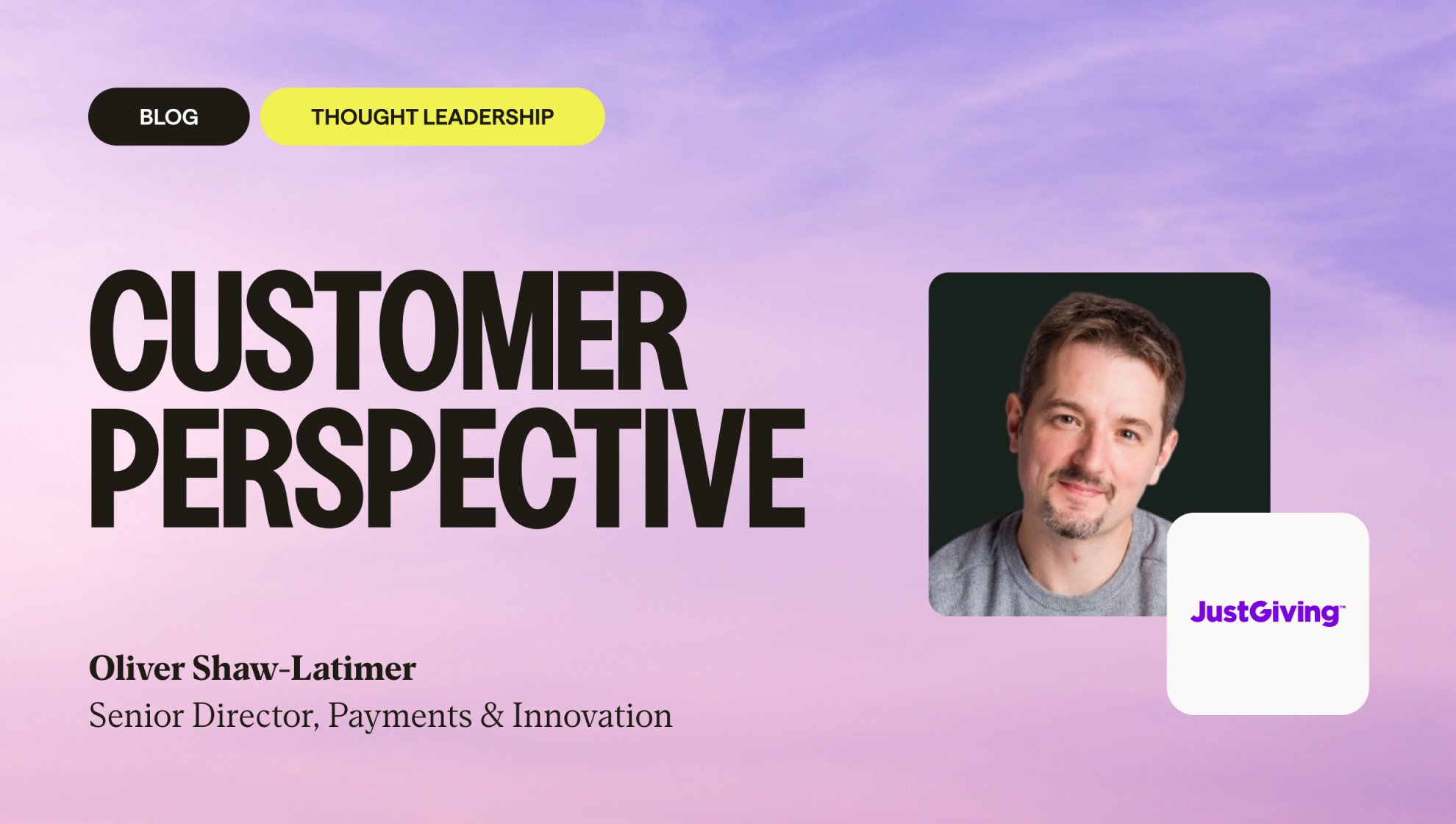What I wish more merchants knew about open banking

Last editedJan 20243 min read
In this guest blog, JustGiving’s Oliver Shaw-Latimer discusses the open banking misconceptions standing between merchants and better value payments services — and how to overcome them.
With much of the fintech community only just beginning to understand the power of open banking, it’s little wonder there’s confusion among merchants.
Common objections include “it’s complicated to implement” (it isn’t) to “there are security issues” (there aren’t, really, and certainly not compared to cards). These misconceptions mean merchants are missing out on benefits that every business would welcome: lower cost payments, higher consumer trust, and yes, less fraud.
In recent years, as the technology has edged closer to the mainstream, examples of successful applications have grown. The spotlight shone brightest during Captain Tom’s fundraising in the early days of the pandemic, when donations made via open banking surged on our platform in what was, arguably, the first mass use case.
Still, I believe the merchant community has only begun to scratch the surface of what’s possible with open banking. Wherever there is a risk to operations, margins or cashflow from failed or higher-cost payments, there is a business case for open banking. And what business wouldn’t want to improve these metrics?
Payments, simplified
Given the confusion over open banking, I’ll take a quick step back and describe what it is – or, at least, what it is to me.
I believe open banking is about simplification. When we go out for a meal and pay friends for our share of the bill, we use the most direct route possible: a bank transfer. Open banking allows merchants to get paid in the same way, cutting out the string of intermediaries that make card payments happen – and their fees.
That makes for cheaper and faster payments (open banking uses the Faster Payments real-time rails), which improves cash flow. And because open banking payments piggyback on banks’ security protocols – users trigger transfers using banking apps – there are also far fewer instances of fraud compared to card payments.
Consumers prefer open banking – and so do we
Right now about 10% of our donations are collected over open banking, but it’s a share of wallet we want to develop.
At JustGiving, we don’t charge a commission fee on donations to charity customers. Instead, donors have the option to leave a voluntary tip. Donations that don’t include a voluntary tip to cover costs can in some cases become loss-making transactions, creating tremendous pressure to reduce the cost footprint of our operations.
The lower cost of open banking payments is a major benefit that helps to sustain our business model and deliver high material value to the sector. As is reduced fraud. We face a lot of card testing and chargeback fraud with card payments, but these issues don't exist with open banking.
Open banking also reduces the number of refunds we have to handle because transfers are immediate and either work or don’t. There are no “insufficient funds”, accidental transactions, or duplicates to deal with.
There is anecdotal evidence, too, that donors value the fact that open banking payments reach their friends’ charitable causes more quickly, and with less skimmed off by intermediaries on the way. Our consumer studies also indicate a preference for the greater reliability of open banking when it comes to larger donations.
Look at the numbers
New, off-the-shelf payment service providers have transformed the implementation of open banking, radically simplifying the process.
As such, every merchant should be looking at the benefits open banking could offer their business and their customers. To test the business case for themselves, and to communicate it to others in their organisation, I’d recommend merchants gather metrics comparing current payment and related operations costs to those of open banking.
Ask questions such as what are you paying per transaction, what’s your failure rate? And what are the direct and indirect costs of delays receiving funds, or processing refunds?
It’s a journey
For new payment methods to take hold, two interdependent things need to happen. There needs to be a breakthrough use case – such as the boost London Underground gave to contactless cards – and the benefits need to be well communicated to consumers and merchants.
On the use case side, it’s tricky to predict which application will push adoption over the edge, but things will move very fast once it happens. HMRC now accepts open banking payments and we will certainly see more big players do the same.
On the communication side, better education from the industry will spur merchants and consumers to start challenging the high costs and low efficiency of traditional payments. Merchants should find a payments services partner with the vision to grow and innovate in partnership with them. Too many have gotten too comfortable with the fees they earn from the status quo.
At JustGiving, the business case for open banking has been conclusively proven as adoption has grown and we've optimised our costs. We’re discovering new benefits all the time and it’s a big part of our future.
Hear from more GoCardless customers about their payment stories.
